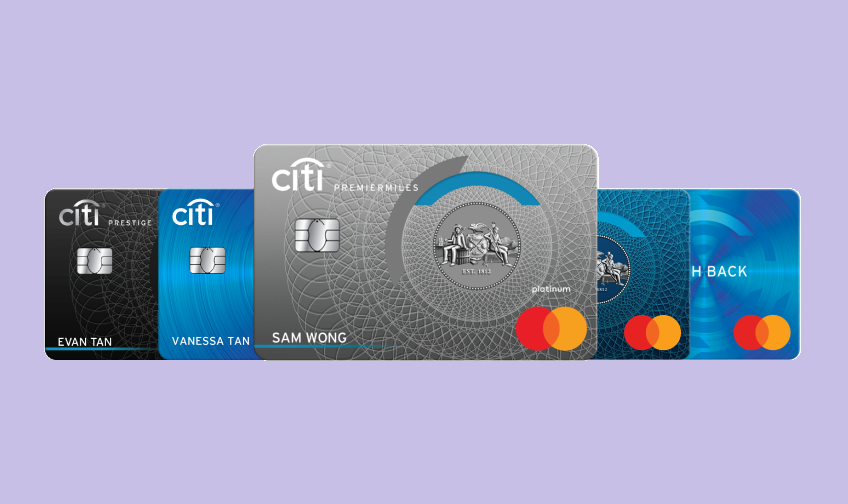The Impact of Online Shopping on Preferences for Credit Cards

The Impact of Online Shopping on Credit Card Preferences
In recent years, as consumers have increasingly embraced the convenience of online shopping, the implications for credit card usage have been significant. The ease of purchasing products with just a few clicks has made credit cards a favored choice, and this shift opens up a host of opportunities and challenges for credit card companies.
Factors Influencing Credit Card Choices
When it comes to selecting a credit card for online shopping, several factors come into play that significantly influence consumer preferences:
- Rewards Programs: One of the biggest draws of credit cards is the opportunity to earn rewards. Many credit cards offer cashback or points for each dollar spent. For instance, a card that provides 2% cashback on all online purchases can save consumers a substantial amount over time, especially if they frequently shop online.
- Security Features: With online shopping comes the concern of fraud. Credit card issuers have responded by enhancing their security measures, such as offering virtual card numbers for online transactions and utilizing advanced encryption technology. These features instill confidence, assuring consumers their financial information is secure.
- Ease of Use: The simplicity of using a credit card at checkout is a significant factor. It eliminates the need for multiple payment methods or cash, facilitating a smoother and faster purchasing experience, which is highly valued in today’s fast-paced environment.
Credit Card Benefits for Online Shoppers
In addition to the pivotal factors affecting credit card choices, many credit cards also come with additional benefits tailored specifically for online shoppers:
- Purchase Protection: This benefit safeguards customers against potential issues such as receiving faulty merchandise or not receiving items at all. Essentially, if a purchase does not go as planned, consumers can often dispute charges and seek a refund, providing an extra layer of security.
- Extended Warranties: For those who shop online for more significant purchases, such as electronics or appliances, credit cards often extend the manufacturer’s warranty. This means that if an item fails shortly after purchase, consumers may have coverage beyond the original guarantee, alleviating out-of-pocket expenses.
- No Foreign Transaction Fees: For consumers who shop online internationally, many credit cards now waive foreign transaction fees, making it more cost-effective to purchase items from abroad. This appeal has enhanced the online shopping experience for those looking to buy unique goods that may not be available in the domestic market.
Adapting to Changing Preferences
As we explore these developments, it’s crucial to recognize the evolving preferences of consumers. Credit card companies must adapt to this changing landscape to remain competitive and serve their clients effectively. By understanding these trends, issuers can create products that meet consumer needs, from innovative security features to enticing rewards programs. Ultimately, both shoppers and credit card companies can benefit from a deeper comprehension of these dynamics in the digital marketplace.
DIVE DEEPER: Click here to discover more
Understanding Shifting Consumer Behavior
The surge in online shopping has dramatically reshaped how consumers interact with their credit cards. As more people turn to digital marketplaces for their purchasing needs, the criteria they use to evaluate credit cards have evolved, leading to distinct preferences that credit card issuers must recognize.
One significant shift is the increased emphasis on flexibility and convenience. Consumers expect their credit cards to provide an effortless online shopping experience. This demand has led to the rise of features that streamline transactions, such as one-click payment options and mobile wallet compatibility. These innovations cater to the desire for quick and efficient shopping, making it imperative for consumers to choose credit cards that align with these conveniences.
Additionally, shoppers are becoming more price-sensitive. With the vast selection of products available online, consumers have developed a habit of comparing prices across multiple platforms. This behavior has intensified the need for credit cards that offer competitive rewards and incentives. A consumer might favor a specific card that provides bonus points for shopping at their favorite online retailer or cards that include promotional offers, which can amplify the rewards earned over time.
Consumer Education and Financial Literacy
As online shopping continues its upward trajectory, financial education has become more crucial than ever. Many consumers are still learning about the various products available and the benefits tied to each credit card option. Knowledge about terms like APR (Annual Percentage Rate), credit utilization, and balance transfer options is essential for making informed decisions. Increased understanding of these elements empowers consumers to select cards that best fit their shopping habits and financial goals.
Moreover, the ability to track expenses has improved with technology. Many credit card providers now offer user-friendly apps that help customers monitor their spending and rewards in real time. This transparency is fostering a new level of financial awareness, allowing consumers to choose cards based on their purchasing behavior and lifestyle. For example, a shopper who frequently buys groceries online might prefer a card that provides a higher cashback rate on food purchases.
The Role of Marketing in Credit Card Preferences
Marketing strategies also play a vital role in shaping credit card preferences among online shoppers. Credit card companies are now using targeted advertising to reach potential customers who actively engage in online shopping. By leveraging data analytics, these companies can create personalized offers that appeal to specific consumer segments. For instance, a marketing campaign focusing on a cashback credit card for tech purchases could attract younger consumers who frequently buy gadgets and electronics online.
The interplay between online shopping and credit card usage is a nuanced phenomenon that demonstrates how consumer preferences are constantly evolving. It is essential for both consumers and credit card issuers to remain adaptable and informed in this rapidly changing environment, ensuring that they leverage the advantages offered by modern shopping practices while navigating the complexities of credit card management.
LEARN MORE: Click here for essential strategies
The Influence of Digital Payment Trends
As online shopping continues to gain momentum, various digital payment trends have emerged, further affecting consumer preferences for credit cards. One notable trend is the increasing popularity of apps like PayPal, Apple Pay, and Google Pay. Consumers are gravitating toward credit card options that are compatible with these platforms, as they offer speed and security. The emphasis on secure payment methods has heightened the importance of credit cards that provide advanced fraud protection and easy integration with these digital wallets.
In particular, younger generations, often referred to as millennials and Generation Z, are more likely to use digital wallets and contactless payments. This demographic places a premium on using credit cards that facilitate these payment methods, pushing issuers to innovate and ensure that their offerings are compatible with the latest technologies. For example, a credit card that allows for seamless integration with digital payment platforms is likely to be more appealing to tech-savvy consumers who prioritize convenience.
The Importance of Cash-back and Reward Programs
Another critical aspect influencing credit card preferences is the significance of cash-back and reward programs. With the abundance of options available online, consumers are increasingly drawn to credit cards that provide lucrative rewards for their online shopping habits. Many cards now offer substantial cash-back percentages or points for purchases made through specific online retailers.
For instance, a credit card that offers a 5% cash-back rate on online shopping may entice consumers to choose it over others, especially if they frequently make purchases on platforms like Amazon or eBay. Additionally, seasonal promotions, such as higher rewards during the holiday shopping season, can further sway consumer preferences, making it essential for card issuers to continually refresh their offerings to stay competitive.
Impact of Subscription Services
As subscription services become a staple in the online shopping experience, credit card preferences are also shifting. Services like Amazon Prime, Netflix, and Spotify require recurring payments, which directly impact how consumers view their credit card options. Many consumers are now seeking credit cards that offer specific benefits for recurring charges, such as waived annual fees or enhanced reward points for subscription services.
This trend is leading consumers to favor cards that provide bonuses for their monthly bills, further incentivizing them to keep using those cards for ongoing subscriptions. For example, a credit card offering double points for streaming services will likely attract customers who prioritize entertainment, thus changing their spending patterns and credit card usage.
The Rise of Social Commerce
The emergence of social commerce is another significant factor influencing credit card preferences. As platforms like Instagram and Facebook introduce shopping features, consumers now have unprecedented access to products directly through their social media feeds. This shift is inspiring credit card companies to develop partnerships with social media networks, offering special promotions or rewards for purchases made through these platforms. For instance, promotions that encourage followers to use specific credit cards when checking out through social media can further capture the interest of this demographic, particularly younger users.
Understanding these evolving dynamics allows both consumers and credit card issuers to navigate the increasingly complex landscape of online shopping, ensuring they make smarter financial choices and offer products that resonate with current consumer desires.
DISCOVER MORE: Click here to learn about the benefits of diversification
Conclusion
In conclusion, the rise of online shopping has significantly reshaped consumer preferences for credit cards, highlighting various factors that influence their choices. The convenience and security of digital payment platforms like PayPal, Apple Pay, and Google Pay have made compatibility with these services crucial for credit card issuers. Additionally, the younger generations, such as millennials and Generation Z, are notably driving this demand, as they favor credit cards that seamlessly integrate with the latest payment technologies.
Moreover, attractive cash-back and reward programs have become pivotal for many consumers, making it essential for credit card providers to continuously innovate and offer competitive benefits. Products and services that cater to online shopping habits, including higher rewards for specific retailers, can significantly influence purchasing decisions. Similarly, the growing prevalence of subscription services is prompting consumers to seek credit cards that enhance the value of their recurring payments, ensuring that their financial choices align with their lifestyle.
The emergence of social commerce introduces another layer to this evolving landscape, as credit card companies explore partnerships with social media platforms to attract younger consumers through targeted promotions and rewards. Overall, the interplay between online shopping habits and credit card preferences reflects a dynamic market, where both consumers and issuers must adapt to stay relevant. As online shopping continues to grow, understanding these trends is crucial for making informed financial decisions and capitalizing on the benefits that modern credit cards can offer.


